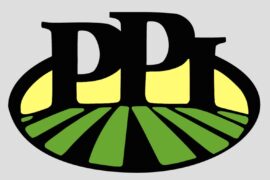Shri Narendra Modi, the prime minister of India, addressed the 3rd Global Potato Conclave at Gandhinagar, Gujarat, via a video conferencing link on January 28. Organized by Indian Potato Association (IPA) in collaboration with Indian Council of Agricultural Research, New Delhi, and ICAR-Central Potato Research Institute, Shimla and International Potato Center (CIP), Lima, Peru, the three-day event attracted scientists from around the world as well potato farmers and other stakeholders in the potato industry.
Modi said noted that it is significant that the conclave is being held in Gujarat, the nation’s leading state in potato production and productivity. He said that while the area under potato cultivation has grown by about 20% in India during the last 11 years, it has increased by about 170% in Gujarat during the same period.
The prime minister added that this is largely due to the policy initiatives and decisions which led to the use of highly efficient methods of agriculture including sprinkler and drip irrigation for cultivation, along with the establishment of modern cold storage facilities and logistics serving the food processing industry.
Gujarat is home for major potato processing companies, and most of India’s potato exporters are based the state. This combination has led to the emergence of Gujarat as a major potato hub in the country.
The prime minister said that his government is “taking rapid steps towards the goal of doubling the income of farmers by 2022.” He added that as a result of the efforts of farmers and government policy, India ranks among the top three countries in the world in the production of many cereals and other food items. He also highlighted promotional measures taken by the Ministry of Food Processing Industries, such as opening the sector to 100% foreign direct investment and encouraging value addition and value chain development through the PM Kisan Sampada Yojana program.
The Prime Minister pointed out that earlier this month, a record was created by transferring an amount of Rs. 12,000 crores to the bank accounts of 6 crore farmers through direct transfer. He added that the priority of his government is to reduce middlemen and other layers between the farmer and the consumer. He said that the emphasis is also on promoting agricultural technology-based startups so that farmers’ databases and agri stacks needed for smart and precision agriculture can be used.
Modi urged scientists attending the 3rd Global Potato Conclave to provide solutions to various issues in agriculture through modern biotechnology, artificial intelligence, block chain and drone technology. He said that the greatest responsibility of the scientific community and policy makers is to help end hunger or malnourishment.
Growth of Frozen Potato Market
In recent years, the demand for frozen potato products in India has increased thanks to stepped-up marketing by various national and multinational companies. Additionally, frozen potato items have rapidly gained prominence in the country as they are convenient to cook and come in a large variety of flavors and shapes.
According to the latest report by IMARC Group, entitled “Indian Frozen Potato Products Market: Industry Trends, Share, Size, Growth, Opportunity and Forecast 2019-2024,” the Indian frozen potato products market reached a value of more than US $804 million in 2018.

The biggest factor catalyzing the growth of the frozen potato products market is the expansion of fast food restaurants such as KFC, McDonald’s, Burger King and Subway. Moreover, the introduction of new product variants with different flavors has attracted a larger consumer base for frozen potato products, in turn boosting expansion of the market.
Busy lifestyles, rising income levels and the higher purchasing power of consumers have further created a shift towards easy-to-cook food products, thereby maintaining the growth frozen potato sales prospects. Looking forward, the market value is projected to exceed US $1.631 billion by 2024, expanding at a CAGR of 12.5% during 2019-2024.Market Summary
- Based on the product type, the market has been segmented as french fries, tikkis, potato wedges, potato bites, smileys and others. Currently, french fries dominate the scene, holding the largest share.
- On the basis of end use, foodservice represents the largest segment, accounting for around two-thirds of the total market share. This can be attributed to the increasing number of fast food chain outlets in the country.
- Based on the distribution channel, the report has segregated the market into business-to-business, supermarkets and hypermarkets, convenience stores, departmental stores, online commerce and miscellaneous. Business-to-business currently accounts for the highest share.
- Region-wise, the market has been segmented into North India, West and Central India, South India, and East India. North India holds the largest share.
- The competitive landscape of the market has also been examined, with some of the key players being McCain Foods, Hyfun Frozen Foods Private Ltd., Iscon Balaji Foods Private Limited, Golden Fries Limited and Bhanu Farms.
Details on how to obtain a copy of the report, which sells for US $1,999, are available by e-mailing the publisher at: sales@imarcgroup.com, or phoning +91-120-433-0800.





